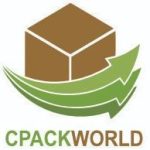Corrugated boxes are widely used for packaging various products, from food items to electronics. They are made of corrugated cardboard, which consists of one or more layers of fluted paper sandwiched between flat sheets of paper. Corrugated boxes are durable, lightweight, recyclable, and customizable for different products and purposes.
However, not all corrugated boxes are of the same quality and performance. They vary in terms of their strength, thickness, resistance, and other factors. Therefore, it is important to test the quality of corrugated boxes before using them for packaging. This can help ensure the safety and protection of the products, as well as the efficiency and cost-effectiveness of the packaging process.
There are many tests that can be performed on corrugated boxes to check their quality and suitability for packaging. Here are five common tests that can help you evaluate the quality of corrugated boxes for packaging:
How to check Quality
Bursting Strength Test: This test measures the maximum amount of pressure a box can withstand before it bursts. The box is subjected to increasing pressure until it ruptures. The result is recorded in pounds per square inch (PSI). This test indicates the toughness and durability of the box walls and the ability of the box to resist rough handling and punctures1.
Edge Crush Test: This test measures the ability of the box to resist crushing on the edges. The box is placed between two plates that apply a force perpendicular to the direction of the flutes (the grooves and ridges on the corrugated cardboard). The result is recorded in pounds per linear inch (PLI). This test indicates the stacking strength and rigidity of the box and the ability of the box to withstand compression and load.
Water Resistance Test: This test measures the water resistance of the glue lines and the sealing of the box. The box is immersed in water while exposing the glue lines to check for their bond strength and water absorption. The result is recorded in grams per square meter (GSM). This test indicates the effect of moisture and humidity on the box and the ability of the box to prevent leakage and contamination.
Paper Grammage and Thickness Test: This test measures the areal density and thickness of the paper used for making the corrugated cardboard. The paper is weighed and measured using a scale and a micrometer. The result is recorded in grams per square meter (GSM) and millimeters (mm). This test indicates the quality and rigidity of the paper and the impact of paper weight and thickness on the box performance.
Box Compression Test: This test measures the maximum load a box can bear before collapsing. The box is placed on a platform that applies a downward force until the box fails. The result is recorded in kilonewtons (kN) or pounds-force (lbf). This test indicates the overall strength and stability of the box and the ability of the box to support heavy or bulky products





